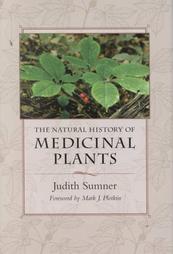 In her book, The Natural History of Medicinal Plants, Dr. Judith Sumner states, “Now, about 40% of all medicinal prescriptions in the United States contain at least one plant-derived ingredient, and European physicians routinely recommend to their patients herbs such as chamomile and coneflower.”
In her book, The Natural History of Medicinal Plants, Dr. Judith Sumner states, “Now, about 40% of all medicinal prescriptions in the United States contain at least one plant-derived ingredient, and European physicians routinely recommend to their patients herbs such as chamomile and coneflower.”
Here’s a report from India that gives insight into the extensive work being done by just one group of researchers to identify new drugs from plants.
- 61 Indian medicinal plants screened for their antimicrobial properties.
- 28 plant extracts showed activity against at least one of the test organisms, including Staphylococcus aureus, Escherichia coli, Pseudomonas aeruginosa, and more.
Significant antimicrobial activity and other properties support the folklore surrounding these plants: Dorema ammoniacum, Sphaeranthus indicus, Dracaena cinnabari, Mallotus philippinensis, Jatropha gossypifolia, Aristolochia indica, Lantana camara, Nardostachys jatamansi, Randia dumetorum, and Cassia fistula.
The Centers for Disease Control and Prevention says, “antibiotic resistance has been called one of the world’s most pressing public health problems.” It’s a good thing this research continues.
2/10/07 09:17 JR